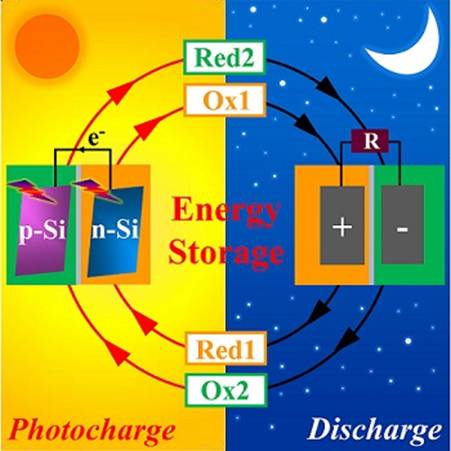Simultaneous conversion and storage of abundant but intermittent solar energy has been coming into the spotlight as a promising strategy for continuous utilization of solar energy. Solar rechargeable flow cell (SRFC) provides an attractive approach for in-situ capture and storage of intermittent solar energy via photoelectrochemical regeneration of discharged redox species for electricity generation. However, overall SFRC performance is restricted by inefficient photoelectrochemical reactions.

Recently, the iChEM researchers Prof. Can Li and Prof. Jian Chen, reported an efficient SRFC based on a dual-silicon photoelectrochemical cell and a quinone/bromine redox flow battery for in-situ solar energy conversion and storage. Using narrow bandgap silicon for efficient photon collection and fast redox couples for rapid interface charge injection, our device shows an optimal solar-to-chemical conversion efficiency of 5.9% and an overall photon–chemical–electricity energy conversion efficiency of 3.2%, which, to the best of our knowledge, outperforms previously reported SRFCs. The proposed SRFC can be self-photocharged to 0.8 V and delivers a discharge capacity of 730 mAh-1. The manuscript has been published in Nature Communications (Shichao Liao, Jingying Shi, Jian Chen and Can Li et al., Nature Communications, 2016, 7:11474, doi:10.1038/ncomms11474). This work may guide future designs for highly efficient solar rechargeable devices.
This work is supported by the National Natural Science Foundation of China, the Basic Research Program of China (973 project) and Collaborative Innovation Center of Chemistry for Energy Materials (2011•iChEM). (By Jingying Shi & Shichao Liao)
paper link:http://www.nature.com/ncomms/2016/160504/ncomms11474/full/ncomms11474.html
